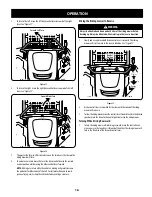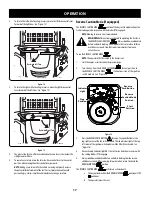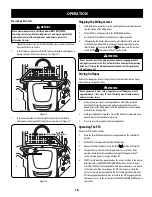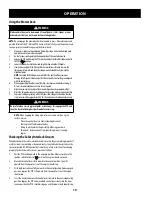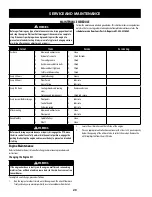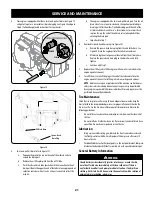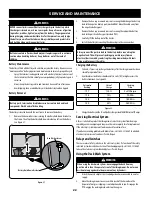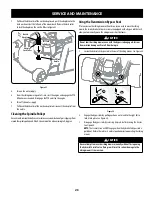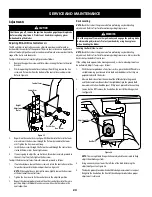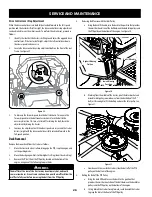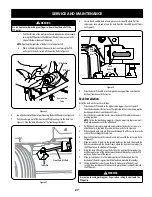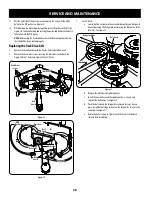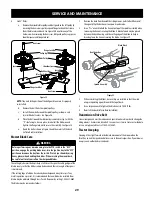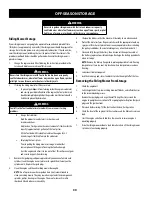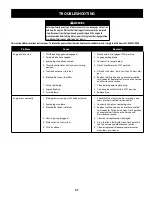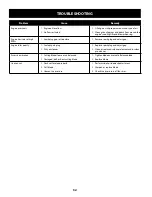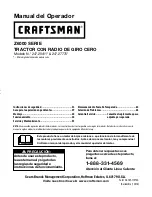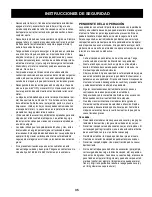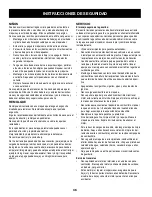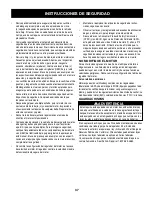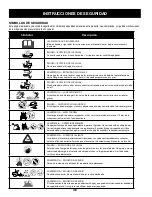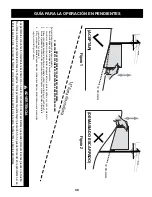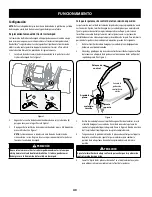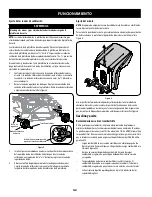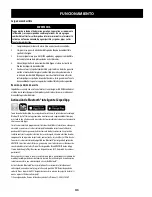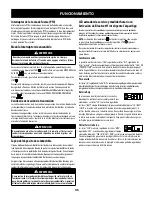
30
OFF-SEASON STORAGE
Riding Mower Storage
If your riding mower is not going to be operated for an extended period of time
(thirty days to approximately six months), the riding mower should be prepared for
storage. Store the riding mower in a dry and protected location. If stored outside,
cover the riding mower (including the tires) to protect it from the elements. The
procedures outlined below should be performed whenever the riding mower is
placed in storage.
1.
Change the engine oil and filter following the instructions provided in the
Service and Maintenance section of this manual.
WARNING
Never store the riding mower with fuel in the tank indoors or in poorly
ventilated enclosures, where fuel fumes may reach an open flame, spark or
pilot light as on a furnace, water heater, clothes dryer, etc.
2.
If storing the riding mower for 30 days or more:
a. To prevent gum deposits from forming inside the engine’s carburetor
and causing possible malfunction of the engine, the fuel system must
be either completely emptied, or the gasoline must be treated with a
stabilizer to prevent deterioration.
WARNING
Fuel left in the fuel tank deteriorates and will cause serious starting
problems.
b. Using a fuel stabilizer:
•
Read the product manufacturer’s instructions and
recommendations.
•
Add to clean, fresh gasoline the correct amount of stabilizer for the
capacity (approximately 3 gallons) of the fuel system.
•
Fill the fuel tank with treated fuel and run the engine for 2-3
minutes to get stabilized fuel into the carburetor.
c.
Emptying the fuel system:
•
Prior to putting the riding mower in storage, monitor fuel
consumption with the goal of running the fuel tank empty.
•
Start the engine and allow it to run out of fuel. This will prevent gum
and varnish deposits from forming.
3.
Remove the spark plugs and pour approximately one ounce of oil into each
cylinder. Crank the engine one or two turns to spread the oil evenly on the
cylinder walls. Replace the spark plugs.
4.
Clean the engine and the entire riding mower thoroughly.
NOTE:
Use of a pressure washer or garden hose is not recommended to
clean your riding mower. They may cause damage to electrical components,
spindles, pulleys, bearings or the engine. The use of water will result in
shortened life and reduce serviceability.
5.
Sharpen the blades so that the mower will be ready to use when needed.
6.
Protect the metal surfaces. Repair scratches with the appropriate touch-up
spray paint. Brush a rust preventive oil on any unpainted surfaces including
the pulleys and blades. (Be careful not to get any oil on the drive belts.)
7.
Clean and fully charge the battery, then disconnect the negative cable at
the battery to prevent possible discharge. Recharge the battery periodically
when in storage.
NOTE:
Remove the battery if exposed to prolonged periods of sub-freezing
temperatures. Store in a cool, dry location where temperatures are above
freezing.
8.
Lubricate all lubrication points.
9.
Jack the mower up and store it on blocks to take the weight off of the tires.
Removing the Riding Mower from Storage
1.
Check the engine oil.
2.
Fully charge the battery, lower riding mower off blocks, and inflate the tires
to the recommended pressure.
3.
Remove the spark plugs and wipe them off. Using the starter, crank the
engine to pump the excess oil out of the spark plug holes. Replace the spark
plugs and the ignition leads.
4.
If drained before storing, fill the fuel tank with clean, fresh gasoline.
5.
Check the level of the engine oil in the crankcase and the hydraulic reservoir
tank.
6.
Start the engine and allow to idle for a few minutes to ensure engine is
operating properly.
7.
Drive the riding mower without a load to make certain all the riding mower
systems are functioning properly.
WARNING
Never store garden riding mower with fuel in tank indoors or in poorly
ventilated areas where fuel fumes may reach an open flame, spark, or pilot
light as on a furnace, water heater, clothes dryer, or gas appliance.
Summary of Contents for 247.20411 SERIES
Page 67: ...NOTAS 67 ...
Page 68: ...NOTAS 68 ...

